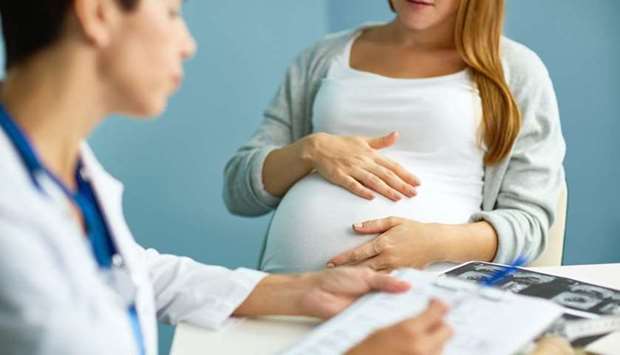During my recent pregnancy I was diagnosed with placenta previa. At that point I had never heard of it before and was shocked when I found out what it meant, and when I spoke about it to other women who had children, only a few knew what this pregnancy complication was unless they suffered the same or had a friend or family member also diagnosed with it. This really shocked me, and I saw a definite need to raise awareness on this topic as it is actually very serious and needs to be discussed way more than it currently is. Not only is there a lack of awareness but there have barely been any studies conducted trying to understand it more or even looking into the potential ways to prevent cases from getting worse.
So, what is the placenta? The placenta is connected to the baby through the umbilical cord and usually attaches to the top or the side of the uterus. It provides nutrition, oxygen and removes the baby’s waste. Placenta previa happens when the placenta lays lower than expected and either partially or fully covers the mother’s cervix. It is usually diagnosed through an ultrasound during the second trimester. The crazy thing is, the causes are unknown, but the cases are more common among women who have had scars on their uterus from previous surgeries such as C-sections and other uterus related procedures and if the woman has been diagnosed with placenta previa in previous pregnancies. It is also more common in women above the age of 35 and during multiple pregnancies. They also say that placenta previa is more common in women who smoke heavily. Still, there is no real evidence due to the absence of focused studies.
What are the symptoms? Placenta previa is mainly associated with one symptom, bleeding usually leading to a C-section or emergency C-section in extreme cases unless it naturally corrects itself by migrating upwards as the uterus grows. When diagnosed, I was disappointed to find out that there was no treatment, but all the physicians I saw recommended reducing high intensity activities including running, squatting and jumping. They also said they would try not to do any physical checks to avoid increasing the risk of bleeding.
The scary thing about the bleeding is that it is painless. The mother has no clue unless she feels or sees the bleeding. This is risky during the evening hours as the mother sleeps. And once she bleeds, she has to be rushed to the emergency room for monitoring. If the bleeding doesn’t stop, she will then be rushed to the delivery room for an emergency C-section for her and the baby’s safety. The issue here is the risk of a preterm baby and the risk of extreme bleeding threatening both the mother and baby’s lives. Therefore, it is crucial to monitor the case closely with consistent ultrasounds checking to see if the placenta migrates, if not, then the doctor will recommend planning a C-section keeping in mind that the goal is to get you as close to the due date as possible. If the case does continue into the third trimester the physician might also recommend bed rest and minimal movement.
In conclusion, my biggest issue with the lack of awareness is the lack of knowledge, especially in the medical field. Physicians should be trying to prevent these cases from developing into extreme cases. Yes, the causes are unknown, and it might be impossible to prevent but there should be more caution when approaching the situation. Contrary to doctors’ orders I believe that women who are diagnosed with placenta previa should automatically consider the option of bed rest or at least try to reduce most physical activity and stress. I feel that physicians and medical institutions lighten the potential severity of the situation, leading the women to continue their lives as is and without worry. They will only recommend complete bedrest if it becomes worse, but by that time there might be no time for bedrest.
* The author is a wellness advocate and influencer @keys2balance.

Physicians should be trying to prevent these cases from developing into extreme cases. Yes, the causes are unknown, and it might be impossible to prevent but there should be more caution when approaching the situation, writes wellness advocate Reem Abdulrahman
